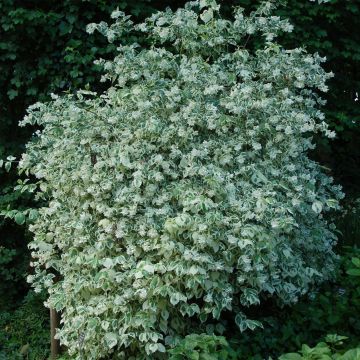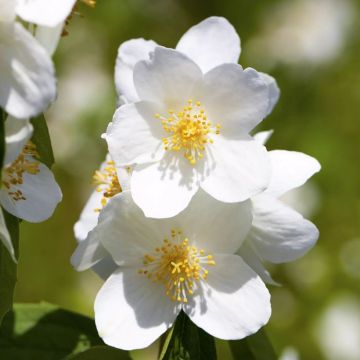Medium Philadelphus
Does this plant fit my garden? Set up your Plantfit profile →
Available in 5 sizes
Available in 4 sizes
Available in 3 sizes
Available in 2 sizes
Available in 3 sizes
Available in 2 sizes
Available in 2 sizes
Available in 2 sizes
Available in 1 sizes
Available in 1 sizes
Available in 2 sizes
Available in 2 sizes
Available in 1 sizes
Available in 1 sizes
Available in 1 sizes
Available in 2 sizes
Available in 1 sizes
Available in 1 sizes
Our selection of Philadelphus, or medium-sized white mock oranges, measuring between 1.50 m (5ft) and 2.50 m (8ft) in height at maturity. These deciduous shrubs with white and fragrant flowers, also known as poet's jasmines, are perfect for enhancing large flowerbeds or a rustic hedge. The old Lemoine hybrids such as Philadelphus 'Belle Etoile' with an arching habit and large single flowers with a strawberry fragrance, are perfect for this purpose. Also consider Philadelphus coronarius, especially its 'Aureus' form with golden foliage, which is slightly less vigorous. It will still be decorative when not in flower. Philadelphus Lemoinei, which reaches about 1.50 m (5ft) in height, is truly undemanding and very hardy, and can be planted in any garden, even the smallest. There are many other interesting cultivars, especially American selections such as 'Natchez', vigorous, very floriferous, which succeeds everywhere. In a hedge, combine your mock oranges with lilacs, deutzias, kolkwitzias, spring spireas, viburnums and other trouble-free shrubs.
Very accommodating, the mock orange thrives in most soils, even fairly dry ones in summer, it is not prone to diseases and shows great hardiness. It tolerates pruning well, which is even recommended from time to time to rejuvenate older specimens.
Haven't found what you were looking for?




























































